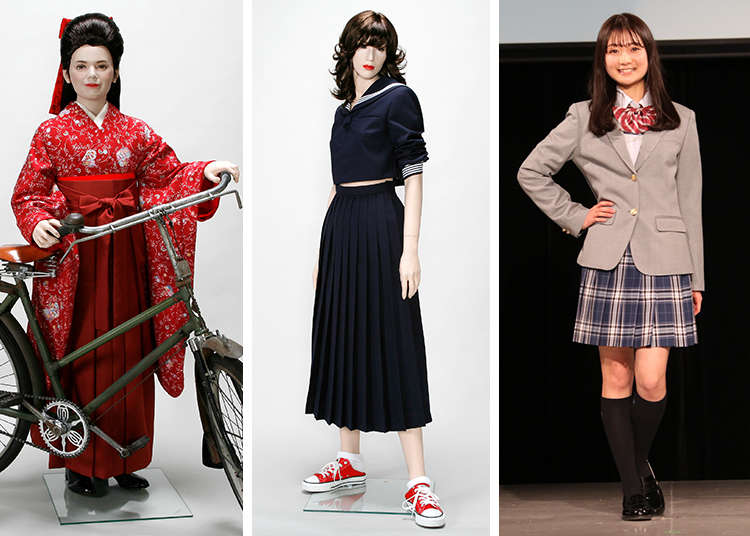
What image pops into your head if you hear the phrase "Japanese school uniforms?" Its purpose seems clear: creating a group by making everyone's appearance the same.
However, seeing Japanese high school kids in blazers and skirts doesn't quite seem to fit this image. The reason for that lies deep within the history of the Japanese school uniform itself.
Except for specific times, the school uniform has always been a symbol of freedom, reflecting the wearer's will and wishes. In any case, Japan's school uniforms are a one-of-a-kind phenomenon that has risen to become a cultural symbol, recognized by people from all around the world.
But how did Japanese uniforms become such a cultural icon? Let's take a look at its history, from the early beginnings to its current status.
- Table of Contents
-
- The Beginning of the Japanese School Uniform in 1879
- Why do Japanese Students Wear Sailor Uniforms?
- Experimenting with Different Japanese Fashion Styles
- Sukeban – The “Delinquent Girl” Changes the Japanese School Uniform
- The Birth of Designer Brand Uniforms
- The Kogal Brings Street Culture to School Uniforms
- Japanese School Uniforms Join Global Trends
- Wearing School Uniforms, Even for Fun
The Beginning of the Japanese School Uniform in 1879
The beginning of the Japanese school uniform can be traced back to 1879, when the male children of Japan's nobility, then called <@kazoku|,i@> started wearing uniforms as they attended private schools.
For women, the Japanese school uniform tradition started around 1900. Back then, said the uniform was a kimono and hakama.
One of the reasons for the introduction of Japanese school uniforms was to adapt to a new kind of classroom - one with desks and chairs – and to give students mobility to participate in gym class properly.
Another factor was that the old social status system was still in place. The school uniform should help everyone to learn equally, no matter what social status they had.
Why do Japanese Students Wear Sailor Uniforms?
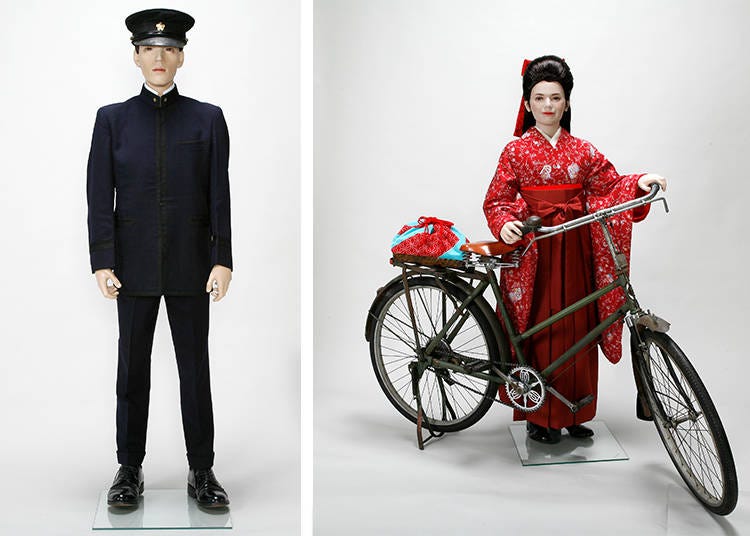
Tomoko Namba, who is an associate professor at Tokyo's Ochanomizu University and specializes in research about school uniforms, explains. "The school made the final decision, but even before Japanese school uniforms were officially introduced, school girls themselves took the initiative and started to wear the hakama or kept asking the school to make the hakama a rule. In the case of young women, they themselves were vocal and active about school uniforms from the very beginning."
During that time, Japan's general public was still mainly clad in kimono. Compared to men's fashion, the switch to Western-style clothes came late for the female population.
The change started with the Rokumeikan, a Western-style building created to welcome (and impress) diplomats and high-ranking visitors from the West.
There, Japanese women wore the latest fashion from Paris while indulging in Western ballroom dancing, French cuisine, and more. However, Western style was limited to the women of Japan's high society during that time.
Following that, a style that blended Japanese and Western aesthetics arose, pairing Western-style accessories with authentically Japanese kimono.
Eventually, around 1920, girls' school uniforms made the full change from hakama to Western fashion. Especially sailor-inspired outfits enjoyed great popularity among female students.
The modern sailor uniform gained popularity as it pushed other styles aside. During this time, the Japanese uniforms weren't ready-made garments, but people had to make them at their own expense. If you had the fabric and pattern at hand, making a sailor-style uniform was relatively easy – another reason for its popularity.
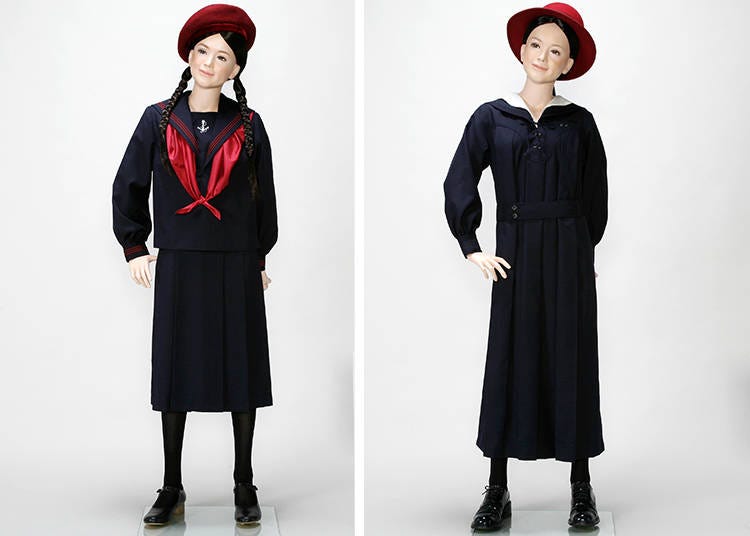
Experimenting with Different Japanese Fashion Styles
According to Tomoko Namba, girls have tried to wear their uniforms in cute or cool ways since the very beginning.
"The school uniform started as a symbol of the elite, so just by wearing one, you were sure to attract admiration and envious glances. Besides, the uniform regulations were not strict before the war, so it was possible to use nice fabric and to adjust it to your own body shape, or style it in a way you like."
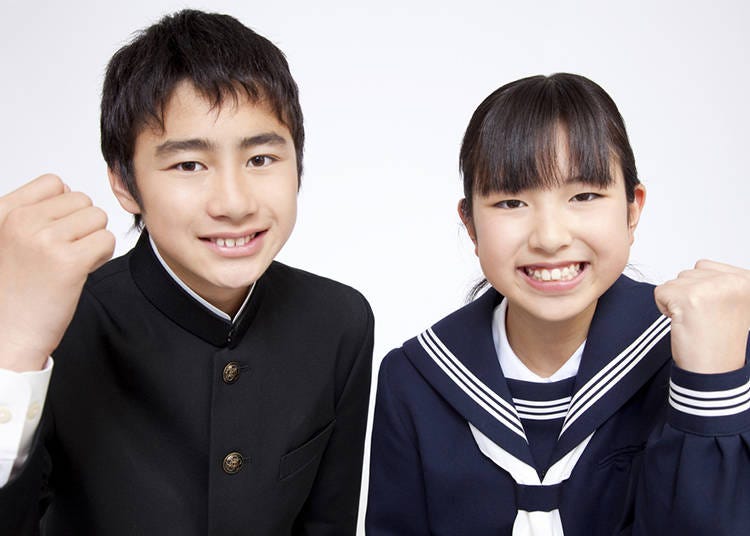
"From the 1920s, girls' uniforms sported a shorter top combined with a long skirt. If the students didn't like the standard style, they seemed to have changed it to a more fashionable version. At that time, pleated skirts were en vogue. Even at schools that had regulations for how many folds a skirt needs to have, records show that the students would wear the small pleated style on days without uniform inspection."
Sukeban – The “Delinquent Girl” Changes the Japanese School Uniform

The background of these changes was the sukeban boom. The term sukeban is composed of the Japanese words for "female" and "juvenile gang leader." It means just that – girl gangster boss. The male version is called tsuppari or banchō.
These gang bosses were known for their daring disregard of school regulations and rules, as well as general bad behavior, such as threatening other students, not paying attention in lessons, and even organizing groups to gain influence and power. Proper ruffians, so to say.
The looks played an important part as well. Hair dye and perm were common for both genders, these "delinquent girls" also wore heavy makeup, and uniforms were changed entirely to create an intimidating look, like the one shown in the picture above.
The student bag that went with an outfit like that was often wrangled to such a flat shape that it was practically impossible to put anything inside. It represented the sukeban's anti-stance towards the school and its strict rules perfectly.
From a regular student's viewpoint, the sukeban style was intimidating yet also cool and somewhat fascinating. It was a time in which kids were under a lot of social pressure, fiercely competitive entrance exams being only one example, so the rebellious and bold sukeban seemed to strike a chord with many students.
Both sukeban and tsuppari became somewhat of a phenomenon, bringing forth movies, books, manga, bands, and even a cat character who wore a sukeban-style uniform was created – and they all were massive hits.
The behavior of these girls and boys got more extreme, and eventually, violence at school and juvenile delinquency became a problem for Japanese society. "Depravity starts with the clothes," was a phrase used by the Metropolitan Police Department, alongside an explanation of the sukeban style and a guide on how to identify said depravity in someone's outfit.
It was such a significant topic, even the American magazine Newsweek picked it up. To combat this trend, both the school uniform industry and the schools themselves established clothing standards and enforced much stricter rules. It's an era with many regulations more stringent than the decades before.
The Birth of Designer Brand Uniforms
A direct result of these strict rules was the movement to abolish Japanese school uniforms altogether, stressing personal freedom and individuality.
It was also the time when uniforms started to put value on looking stylish and switched to the now-popular blazer style, which has been thought of as rather unfashionable until then.
In the wake of a declining birth rate, schools used stylish uniforms to attract students more aggressively and the clothes became a symbol of a school’s charm.
This fashion-oriented strategy hit the mark just perfectly – the uniform you see in the image below created a flood of applications for its school.
It was created in 1984 and enjoyed immense popularity, thus becoming an epoch-making school uniform for the blazer style.
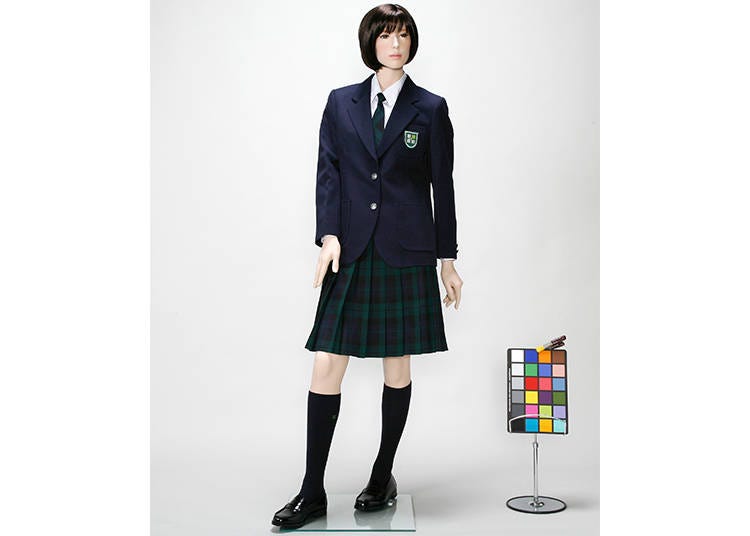
This uniform was created by Makoto Yasuhara of the long-established uniform manufacturer Tombow, established in 1876.
"I thought that it was necessary to introduce a new style, so I promptly created the blazer style, hinting towards traditional fashion. I am thankful and thrilled that the uniform is so well received and becomes a charm of the school," says Makoto Yasuhara himself.
Following this success, Tombow teamed up with various designers to create brand uniforms, such as the KANSAI SCHOOL FORM by Kansai Yamamoto, COMME CA DU MODE School Label.
The Kogal Brings Street Culture to School Uniforms
But back to the topic of the history of Japanese school uniforms. The next milestone was the 90s when fashion-focused Japanese high school girls became global trendsetters.
Even manufacturers asked for their input concerning product development, relying on their opinion to create a hit product. These girls were called kogal, or kogyaru. Gyaru is the Japanese term for "gal" and refers to fashion- and trend-conscious young women. The "ko" in "kogyaru" refers explicitly to high school students. And while the kogals didn't have any political influence, they nonetheless changed school uniforms through the power of their opinions.
Standard fashion items of the kogal are a Burberry muffler to go with the loose socks and knitwear by Ralph Lauren. At first, this fashion style was mainly worn by the most popular high school students at schools in Central Tokyo.
In 1995, however, the pop icon Namie Amuro popularized the kogal style all around the country. She appeared singing and dancing with tanned skin, long hair, and dressed in chunky boots and a mini skirt. By that, she became an "ambassador of kogal," so to speak, and enjoyed great popularity among high school girls throughout Japan.
This style was incorporated in school uniforms, leading to very short miniskirts. The iconic long, white, and loose-fitting socks were used to hide bowlegs, and to make one's legs seem longer and slimmer.
Japanese schoolgirls took to reading magazines such as Popteen and Tokyo Street News! carefully, following all kinds of kogal trends with great attention while honing their own style.
The kogals looked for what they suited them best, between rolling their skirts up at the waist to make them stylishly short and having to revert them back to their regular length when the teacher took note of it.

On the boys' side, the trend kept being influenced by rowdy culture. Since the late 80s, Shibuya Center Street has acted as a gathering spot for various groups, including teenagers, high school students, and young ruffians.
Their dress style came to be known as shibu-kaji, "Shibuya casual," while the youngsters themselves got the nickname teamers. Their wild fashion consisted of long hair paired with leather jackets, sagging jeans, and boots – it created a trend that was quickly picked up by TV personalities, entertainers, and all sorts of fashion-forward folk.
Of course, Tokyo's high school students were more than aware of the teamer trend. Adjusted to a school uniform, it meant oversized slacks and loose shirts that weren't tucked in. From 1994, this style has kept spreading as surfer and skateboarder fashion.
From there on, school uniform trends and styles keep changing rapidly. The kogal fashion, which started as somewhat of a niche style, went on to become a general trend – at least until people started thinking it was pretty ugly around 2000 and put an end to it.
Japanese School Uniforms Join Global Trends
Japan's school uniform manufacturers keep a close eye and global trends and update their designs accordingly.
"The designs of school uniforms are greatly influenced by fashion trends. Of course, school regulations are always followed, but aspects such as the number of buttons on a jacket or the depth of a V-neck do change with fashion. Currently, the V-necks are shallow, and while slacks have had two pleats up until now, the current fashion is with only one or without any pleats. Schools that offer slacks for girls change their silhouette to a slimmer form."
Offering girls the option to wear pants instead of a skirt seems to be a result of the growing social awareness of the needs of LGBTQIA students. Other factors that play a role in changes such as these are the general needs of both pupils and parents, functionality, and environmental consciousness.
"Stretch and water-repellent finishing, antibacterial deodorization, longer sleeves, and the ability to wash the uniform at home instead of going to the cleaners. Eco uniforms are also increasing, made from recycled polyester," explains Makoto Yasuhara.
Wearing School Uniforms, Even for Fun
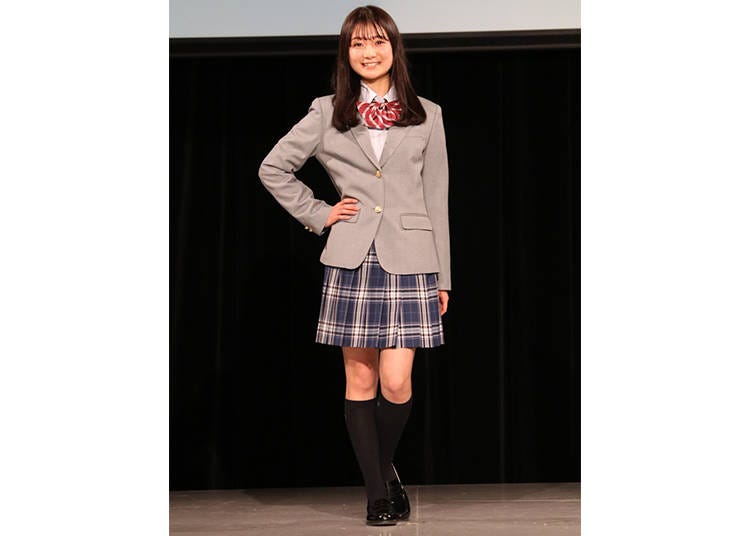
Right now, middle school uniforms boast the sailor style with a stand-up collar, while the trend for girls' high school uniforms is the blazer style. The number of schools that do not decide on an outfit is also increasing, and regulations and rules are generally getting more relaxed. Some examples are a free choice between uniform and regular clothes, giving students the freedom to arrange the standard attire in a way they personally like, and to generally make a look fashionable and more personal. But why do so many students wear a uniform instead of private clothes, even if given a choice?
"When we asked the students," explains Tomoko Namba, "they told us two main reasons. Because now is the only time they can wear it, and because they can't be bothered to put together an outfit every day. The first reason stems from the desire to show one's status as a high school girl and to show one's charm and abilities. In case of the other reason, especially adolescent students often worry about others thinking their outfit is ugly, so it's easier to stick to a school uniform that decides one's look to a certain extent. That gets rid of the worry of doing something wrong."
Thanks to the continuous efforts of manufacturers and the students' own style and sense, the uniform evolved from ugly to stylish, and now is an irreplaceable part of student fashion.
On top of that, Japanese people have rather special feelings about school uniforms. According to Tomoko Namba, "The school uniform is a symbol of one's own teenage years and youth for adults, and for the students itself, it is a clear mark of their status as a middle or high school girl.
In other words, school uniforms are a symbol of the passing of time, a chapter of one's life open only for a limited time. The students themselves are very aware of this as well and find exceptional value in their uniforms.
The topic of Japanese school uniforms is strangely similar to the country's iconic cherry blossoms. The filigree flowers bloom only for a brief time before being scattered by the wind, so people enjoy their enigmatic beauty while it lasts.
"I can only wear this now," "I'm only a high school girl for three years," these are the thoughts that a school uniform represents. As such, its look isn't only crucial for the students themselves but the adults who make them, and it becomes a unique cooperation for the most stylish look. Because the school uniform represents something so unique and precious, this striving comes naturally.
As far as the international interest for Japan's school uniforms goes, Tomoko Nanba has the theory that idol groups who wear uniforms as costumes are a significant reason for the global popularity.
"This isn't from an academic point of view, but I wonder if just like a guy in a suit looks cool, a young woman in a high school uniform looks even more stylish and cute? Clothing can portray a person's personality and sense in a good or bad way and have an impact on whether they're popular among peers, but if you wear a uniform, I think you'll impress quite a lot of people in a positive way."
As school uniforms started to appear in movies, manga, anime, and all sorts of media more and more, it became a symbol of young people and gained fame all around the world. Makoto Yasuhara pinpoints one specific event that made him realize this.
"I was impressed when I saw a female high school student wearing a summer uniform in Tokyo's promotional video during the Closing Ceremony of the Rio Olympics in 2016."
Indeed, the uniform-clad student gave people a taste of what the Olympic Games in Japan will be like, right at the beginning of the video. As she drops her bag and starts to run, she represents youth, energy, and spirit, a positive image all around, all while wearing her uniform. For Japanese people, this image does not seem strange at all.
School uniforms exist in all kinds of different styles all around the world. What makes Japan's school uniforms so special, however, are the thoughts and memories connected to it, earning it a unique place on the global fashion stage.
Be sure to read our follow-up article on "free uniforms" to find out more about the trend of wearing the school uniform even as a leisure outfit!
*Prices and options mentioned are subject to change.
*Unless stated otherwise, all prices include tax.
Popular Tours & Activitiess
Recommended places for you
-

Enjoy Japan's Gorgeous Winter Lights! Ride the Romancecar to Shonan no Hoseki Illumination
by: Guest Contributor
-

2025 Autumn Colors Report: Kurobe Gorge Nearing Peak
by: Timothy Sullivan
-

A Travel Game Changer! Go Hands-Free Between Tokyo and Kyoto with LUGGAGE EXPRESS by JTB and JR Tokai
by: Guest Contributor
-

Don't Miss Out! The One Thing You Must Do Before Shopping at Mitsui Shopping Park LaLaport: Get Your Max 10% OFF Coupon Book
-
Ad

Walk in the Footsteps of Believers: A 4-Day Pilgrimage Across Goto Islands, Nagasaki Prefecture
by: Yohei Kato
-

LaLaport TOKYO-BAY North Building Now Open: Shop, Dine & Enjoy Events at LaLa arena, Just 2 Stops from Disney
by: Wemmy Chau
Inspiration for Accommodations
-

Enjoy Mt. Fuji from the Comfort of Your Room! Recommended Ryokan with Mt. Fuji View
-

Stay Near the Cherry Blossoms! Hotels for Cherry Blossom Viewing in Tokyo
-

Family-Friendly Hotels with Free Shuttle to Disneyland: Convenient Access for a Magical Stay
-

Top Ranked Hakone Hotels with Mt. Fuji View: Enjoy Stunning Scenery from Your Private Space
-

Convenient Tokyo Hotels with Airport Shuttle: Ideal for Families and Heavy Luggage
-

Stunning Tokyo Tower View Hotels: Enjoy Spectacular Scenery from Your Private Space
-

Convenient Asakusa Hotels with Kitchens: Ideal for Extended Family Visits
-

Experience Luxury: Hakone's 10 Best Five-Star Accommodations
-

Enjoy Mt. Fuji Autumn Leaves! Top Hotels Near the Popular Autumn Leaves Corridor
-

Experience Hakone Fall Foliage from Your Room with Stunning Views
-

Tokyo has a bar that only lets you in if you come alone – No bringing your friends allowed!
-
Ad

Japan’s First Department Store: Why Nihombashi Mitsukoshi is a Must-Visit Landmark in Tokyo
-

5 Recommended Stores to Buy Electronics in Shibuya: Find the Latest Products at Electronics Retailers and Popular Shops
by: Ran Tanaka
-

Healthcare in Japan for Tourists: What to Do When You Get Sick or Injured in Japan
-

Tokyo Station Top 10 Sweets Ranking!
-

Exploring Tokyo Station: 11 Must-Visit Spots Around the Heart of Tokyo
- #best ramen tokyo
- #what to buy in ameyoko
- #what to bring to japan
- #new years in tokyo
- #best izakaya shinjuku
- #things to do tokyo
- #japanese nail trends
- #what to do in odaiba
- #onsen tattoo friendly tokyo
- #daiso
- #best sushi ginza
- #japanese convenience store snacks
- #best yakiniku shibuya
- #japanese fashion culture
- #best japanese soft drinks


















